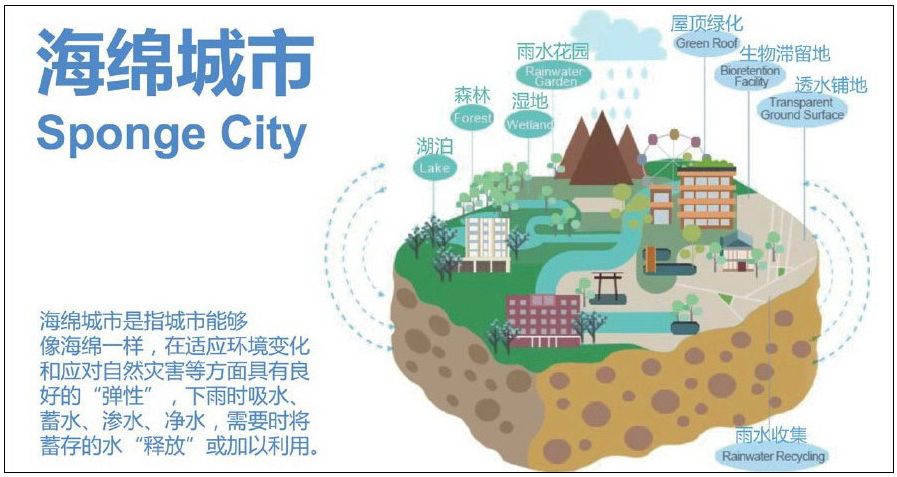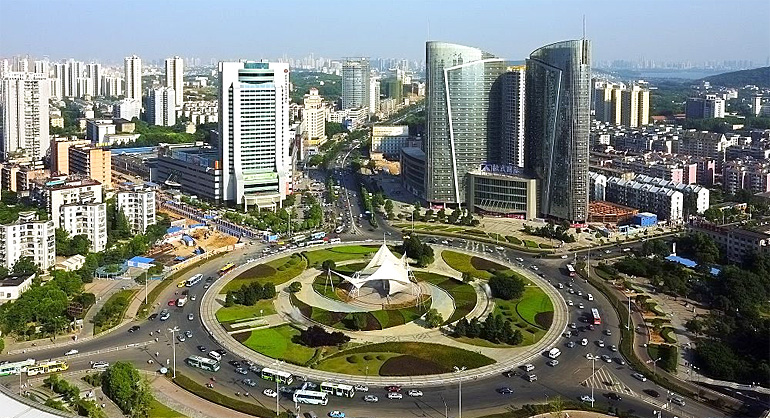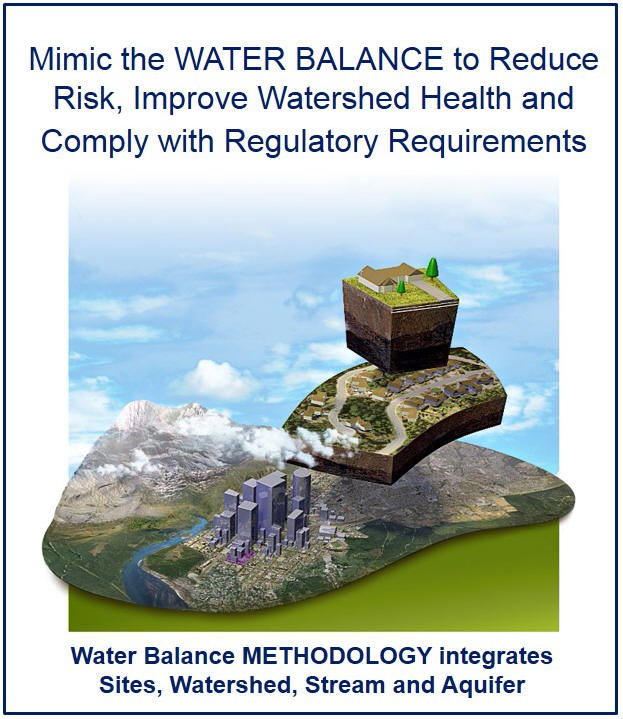Sponge City: Solutions for China’s Thirsty and Flooded Cities
Note to Reader:
Flooding is just one of the major water management issues facing China’s urban areas. More than half of China’s cities are considered water scarce. If these water challenges are unresolved, they could have significant economic and security implications for China.
While there is no one-size-fits-all solution to China’s urban water issues, a new nationwide initiative—the “sponge city” program—offers a flexible solution for both water-scarce and water-logged cities.
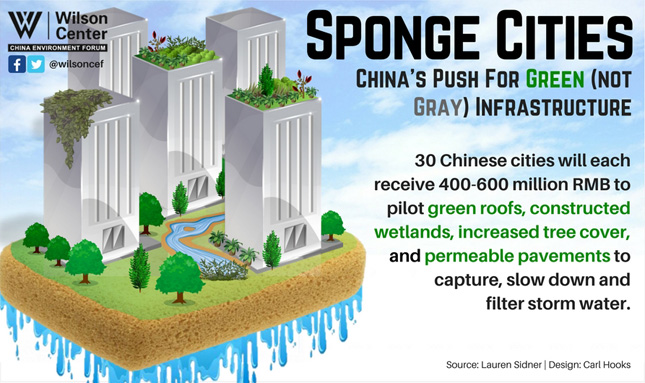
Acknowledgment: The Woodrow Wilson International Center for Scholars is the living, national memorial to President Wilson established by the United States Congress in 1968
Flood & Drought: Chinese ‘Sponge Cities’ Will Capture Rainwater to Restore Urban Water Balance
Chinese cities are suffering from floods more often than most. At the same time, many cities in China face a serious water shortage. The need to confront both water shortages and urban flooding has reportedly created a major infrastructure challenge for Chinese city planners.
The Chinese acknowledge that climate change has played a role in the increase of urban flooding, producing more rainfall during shorter periods. Widespread adoption of rainwater capture techniques is seen as a way to alleviate drought as well as flooding.
A New Way to Think About the Urban Landscape
 Four years ago, Chinese President Xi Jinping offered a new way to think about flooding and drought. At China’s Central Government Conference on Urbanization in 2013, he announced that cities should act “like sponges.”
Four years ago, Chinese President Xi Jinping offered a new way to think about flooding and drought. At China’s Central Government Conference on Urbanization in 2013, he announced that cities should act “like sponges.”
This proclamation came with substantial funding to experiment with ways cities can absorb precipitation. It also injected a new term into the global urban design vocabulary.
 “Basically, ‘sponge city’ is a phrase that was invented in China,” says Austin Williams, an urban studies professor at Jiaotong-Liverpool University in Suzhou. “Nobody used this phrase until Xi Jinping announced it.”
“Basically, ‘sponge city’ is a phrase that was invented in China,” says Austin Williams, an urban studies professor at Jiaotong-Liverpool University in Suzhou. “Nobody used this phrase until Xi Jinping announced it.”
“Tthe West doesn’t build cities, it merely tinkers with existing ones.” By contrast, China is poised to incorporate sponge-city concepts into its ambitious city building program.
To Learn More:
Read Sponge City: Solutions for China’s Thirsty and Flooded Cities by Lauren Sider, published in the New Security Beat, a publication of the Woodrow Wilson International Center for Scholars, July 2017.
Read Can ‘sponge cities’ solve China’s urban flooding problem? by Wade Shephard, published by CityScope, June 2016.
EXTREME WEATHER: China bets on ‘sponge cities’ to cope with flooding and drought, a story published by US-based Environment & Energy , June 2015.
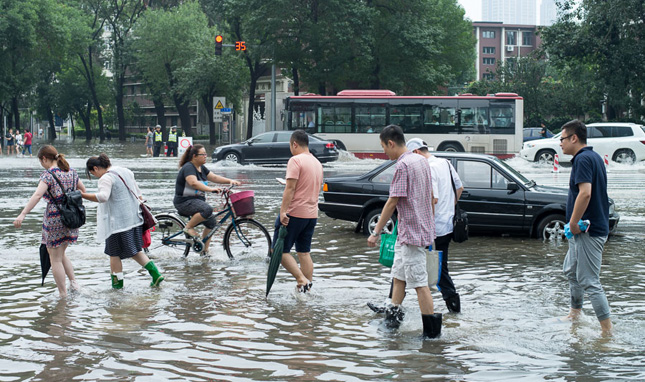
Photo Credit: Flooding in China, July 2016, courtesy of Flickr user Paul Gonzalez.
Restore the Water Balance
The so-called ‘sponge city.’ is a way to visualize the Water Balance, and use of landscape-based measures to restore the seasonal distribution of water entering and exiting a region each year.
In 2015, the Chinese central government pledged to provide billions in financial assistance over the next three years to implement green infrastructure so that the urban landscape in 16 cities will function as urban sponges. This is much like the approach adopted by the City of Philadelphia and others in North America.
While the buildup of ‘sponge cities’ does not mean the end of constructing gray infrastructure (storm sewers and other traditional methods of dealing with rainwater), Chinese experts say that it would reduce demand on costly drainage systems.
What is the Sponge City Program?
Unlike traditional cities, where impermeable roadways, buildings, and sidewalks interfere with the natural water cycle, sponge cities mimic and support the natural water cycle.
They use nature-based solutions, such as rain gardens, green roofs, constructed wetlands, and permeable pavement, to naturally capture, slow down, and filter stormwater. That water can then replenish groundwater aquifers or be stored for future use.
Sponge city technologies could also support sludge-to-energy development by preventing excess stormwater from diluting sewage water so much that it cannot be used to generate electricity for powering treatment plants.
Water Balance Performance Targets
In October 2015, the State Council issued guidelines dictating that by 2020, 20 percent of urban areas should locally store and reuse 70 percent of all rainwater. By 2030, 80 percent of urban areas should meet that target.
Achieving this goal will mean retrofitting existing urban areas and designing new development to incorporate sponge city features.
Water Balance Methodology
Developed in British Columbia, the Water Balance Methodology is about managing the whole rainfall spectrum and providing benefits to the stream through the wide range of stream needs – from base flow to managing flooding. The Water Balance Methodology bridges all ranges in rainfall and streamflow events.
The Water Balance Methodology incorporates robust and proven calculation techniques and engineering applications to define a watershed and stream as a whole system. In this manner the results can be used to provide a quantitative assessment of both impacts and mitigation effectiveness. It also possible to show benefits that have been long thought as not achievable.
To Learn More:
To learn more about the British Columbia approach, click on click on Primer on Water Balance Methodology for Protecting Watershed Health.
To read about British Columbia demonstration application experience, visit Sustainable Watershed Systems, through Asset Management.


